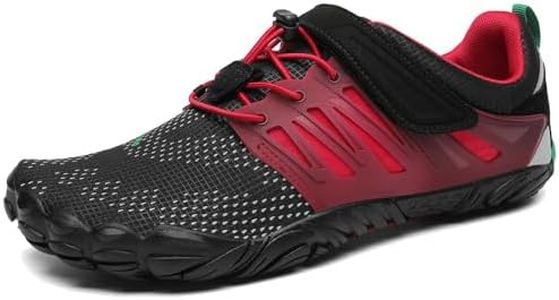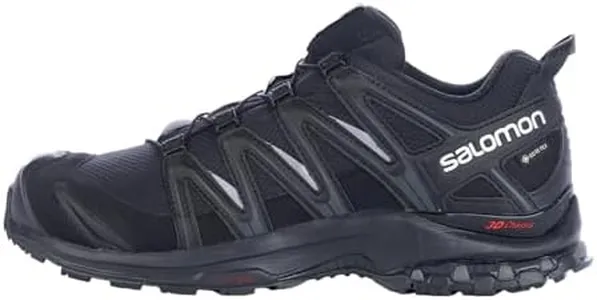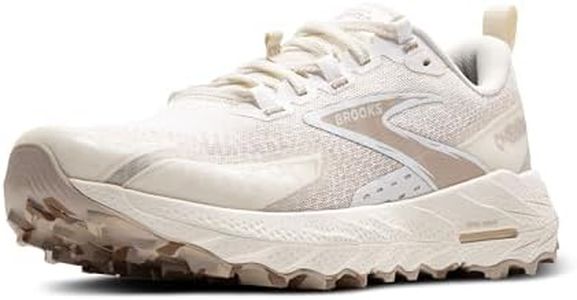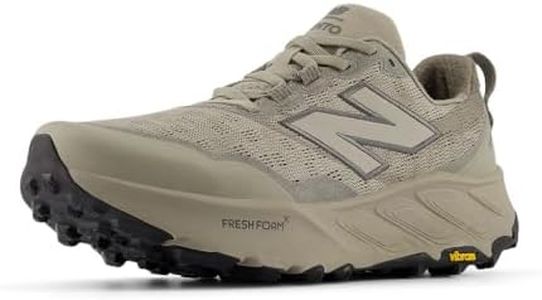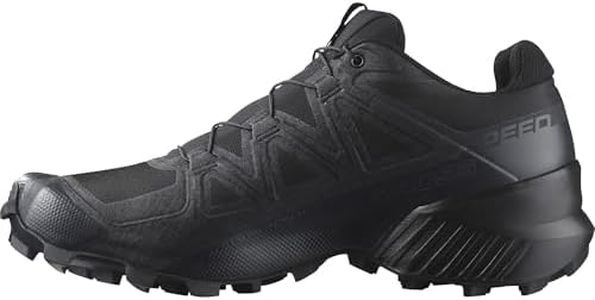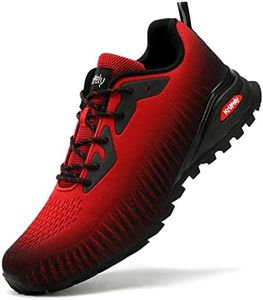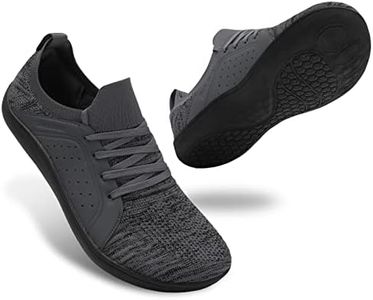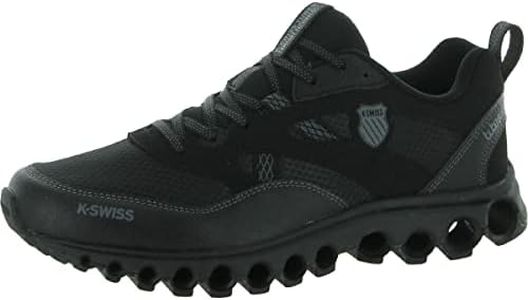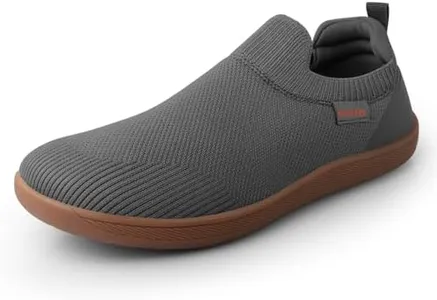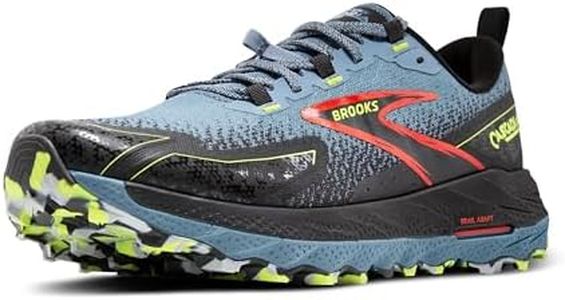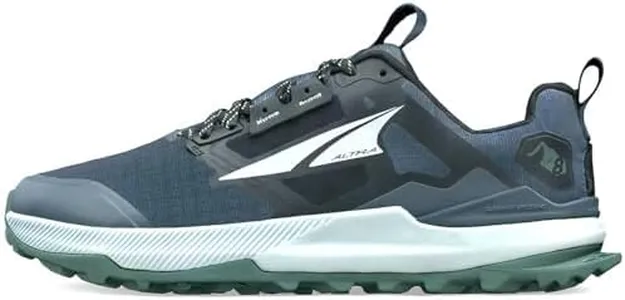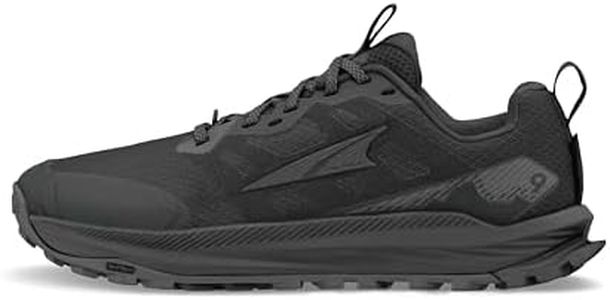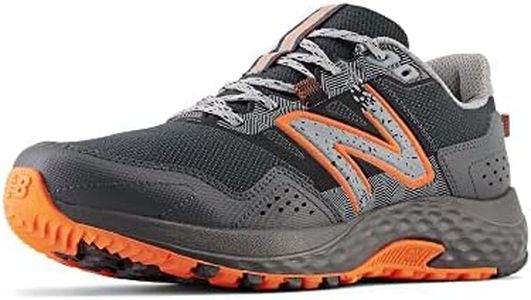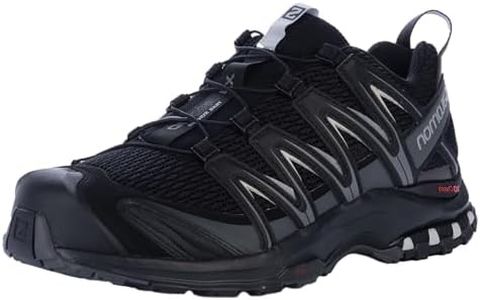10 Best Trail Running Shoes 2025 in the United States
Our technology thoroughly searches through the online shopping world, reviewing hundreds of sites. We then process and analyze this information, updating in real-time to bring you the latest top-rated products. This way, you always get the best and most current options available.

Our Top Picks
Winner
ALTRA Men's Lone Peak 9 Trail Running Shoe, Black, 11.5
Most important from
416 reviews
The Altra Lone Peak 9 is designed with trail runners in mind, featuring a breathable mesh upper that keeps feet cool and comfortable during long runs. Its roomy toe box supports natural toe splay, which can improve balance on uneven terrain. The shoe includes a lace-up closure and pull tabs for easy on and off. Cushioning is provided by an EVA insole, offering decent comfort, though it may feel less plush compared to some heavily padded trail shoes.
Traction is managed by a rubber outsole that performs well on a variety of surfaces. Protection comes from an elevated, rounded toe design which provides additional space to prevent toe injuries on rocky trails, while the mesh upper offers limited water resistance and minimal shielding from debris. The shoe’s construction with mesh and EVA materials suggests a lightweight build, beneficial for speed but potentially less durable under very rough conditions.
The Lone Peak 9 is suitable for runners who prioritize comfort, natural foot movement, and breathability on moderate trails. For those needing high water resistance or heavy-duty protection, other options might be more appropriate.
Most important from
416 reviews
Salomon Men’s XA PRO 3D Gore-Tex Waterproof Trail Running Shoes - Black/Black/Magnet - 11
Most important from
10240 reviews
The Salomon Men’s XA PRO 3D Gore-Tex shoes are designed to handle tough trail running and hiking conditions well. They excel in waterproofing thanks to the Gore-Tex membrane, keeping your feet dry and comfortable even in wet or windy weather. The shoes also provide strong stability with a unique midsole design that helps control your foot’s motion and protects your feet from sharp impacts on rough terrain.
Traction is a strong point, with the Contagrip rubber outsole offering reliable grip on a variety of surfaces like loose gravel or mixed trails, helping you stay steady and confident. Protection-wise, the reinforced toe cap is a useful feature that guards against bumps and scrapes. Comfort and fit are thoughtfully addressed, but because these shoes offer advanced stability and protection, they might feel a bit heavier compared to lighter trail runners, which could affect speed for those focused on racing or very fast runs.
These shoes represent a solid choice for those who prioritize durability, foot support, and all-weather performance for challenging outdoor adventures rather than just lightweight speed.
Most important from
10240 reviews
Brooks Women’s Cascadia 18 Mountain Trail Running Shoe - Coconut/Chateau/White - 8 Medium
Most important from
281 reviews
The Brooks Women’s Cascadia 18 is designed for trail runners and mountain hikers who need reliable stability and protection on varied terrain. It features DNA LOFT v2 cushioning that feels soft yet responsive, making long runs more comfortable. The outsole uses TrailTack Green rubber with recycled content, offering strong grip on wet and dry surfaces, which is great for slippery or uneven trails. Stability comes from the Trail Adapt System and a ballistic rock shield, helping protect your feet from sharp rocks while maintaining flexibility, so you won’t feel too stiff. The upper is made from breathable, quick-drying mesh with reinforced overlays that guard against trail debris, and a TPU mudguard plus toecap keep your feet shielded from mud and small obstacles. Weighing about 1.5 pounds, the shoe strikes a reasonable balance between protection and not feeling too heavy.
While the cushioning is soft, some runners who prefer very plush or maximal cushioning might find it a bit firm. It is not fully waterproof, so in heavy rain conditions your feet might get wet. This shoe suits women looking for a well-rounded, durable trail shoe that offers good traction, foot protection, and comfort for moderate to technical trails without extra bulk.
